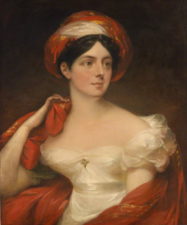In March 1739 a Buckingham clergyman’s wife named Jane Johnson wrote charmingly to a cousin about her one-year-old daughter, Barbara. She mocked the idea of scanning a child’s face for family resemblances. “She is . . . as much like herself as ever you saw a little girl in your life.” It is the kind of remark that any mother might make about her baby, but Jane Johnson, a run-of-the-mill, middling-sort married woman, was nevertheless extraordinary as a mother.
She eagerly followed the trend for parents to take an active role in the development of their children (as Richardson’s fictitious exemplar Pamela did in the continuation of her story, as well as innumerable actual women). But Johnson was not merely a follower; she was also a ground-breaker. Most of the writings she left behind her are typical of literate women at the time: notebooks, religious musings, and letters (which incorporate poems and stories). But her writings for her children include one unprecedented text (billed as the earliest known original fairy story in English) and one unprecedented set of texts, a “nursery library” or complete suite of teaching aids.
Johnson wrote out her “fairy-tale” for her daughter and eldest son, and bound it like a proper book, about five or six years after the little Barbara had looked like herself rather than like her relations. This is startlingly early, before the late-eighteenth-century wave of professional writers for children, at about the same time as John Newbery’s A Little Pretty Pocket-Book, 1744, which is generally presented as a first. Johnson called hers: “A very pretty story to tell Children when they are about five or six years of age”. Her manuscript is now in the Bodleian Library, Oxford, and it finally, in 2001, reached print as a Bodleian publication, reproduced in modern type and a facsimile of Johnson’s original.
It is markedly unlike such fairy-tales as Beauty and the Beast or Little Red Riding Hood. The child heroine and hero are named Bab and George, like the two eldest Johnson children, but they are, in the words of Orlando: Women’s Writing in the British Isles from the Beginnings to the Present, “improbably perfect creatures.” Magic enters the story when their virtues are rewarded with a journey “to the Castle of Pleasure and Delights . . . in a gold and diamond chariot drawn by six white lambs, with angels as outriders.” The real-life Bab and George are said to have taken “Vast Delight” in this story, and insisted on hearing it again and again.
Even more remarkable is Jane Johnson’s “homemade nursery library”, a teaching kit “containing mobiles, verses, ‘word chips’, sets of illustrated letter cards (by which letters can be gathered into syllables and syllables into words), and little hand-made books.” It amounts to 438 pieces. All these are now in the Lilly Library at the University of Indiana at Bloomington, which has reproduced the teaching-tool set on the university website. Historians of writing for children have rushed to praise this labour of love. Lissa Paul in The Children’s Book Business calls it “enticing” as well as “beautiful”. Evelyn Arizpe, Morag Styles, and Shirley Brice Heath celebrate Johnson’s perception of the fact that “learning to read requires frivolity, storytelling and diversion as well as diligence, rigour and repetition,” and provide generous illustrations from Johnson’s work in their Reading Lessons from the Eighteenth Century. Thus has scholarly interest in changing cultural practices brought this domestic woman out into public notice, no longer hidden from history.
All information here is from Orlando, an electronic resource published by Cambridge University Press, by subscription, at http://orlando.cambridge.org.

